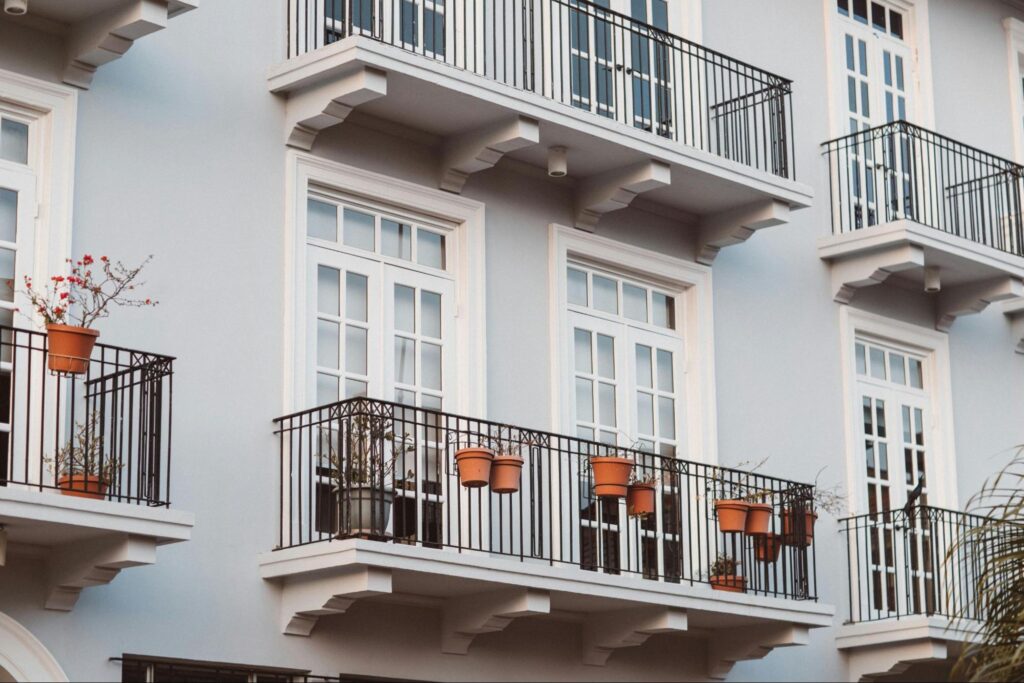Window film is a popular and effective solution for various window-related issues. Whether you’re looking to enhance your home’s energy efficiency, increase privacy and security, or simply add a decorative touch, window film can offer a range of benefits. In this article, we will explore the ins and outs of window film, including its different types, installation process, and maintenance, and debunk common misconceptions. By the end of this guide, you’ll have a comprehensive understanding of window film and all the essential information you need to make informed decisions about its usage.
Understanding Window Film
When it comes to window film, it’s important to start with the basics. Window film is a thin, self-adhesive material that can be applied to the interior surface of windows and glass doors. It is made from a combination of polyester and various coatings, such as metals, dyes, or ceramics, which give window film its specific properties.
The Basics of Window Film
Window film serves multiple purposes, including heat reduction, UV protection, glare reduction, privacy enhancement, and decorative effects. The thickness, composition, and added features of window film can vary depending on its intended application. Many types of window film offer a combination of benefits, making them versatile solutions for different needs.
Different Types of Window Film
There are several types of window film available, each designed for specific purposes.
Some common types include:
- Solar Control Film: Designed to reduce heat and glare from the sun, solar control film can lower cooling costs and make indoor spaces more comfortable.
- Privacy Film: Privacy film obscures the view from outside, preventing onlookers from seeing into your home or office. It can come in various designs, colors, and opacity levels to suit your preferences.
- Safety and Security Film: This type of film is designed to strengthen windows and prevent shattering, providing added protection against break-ins, severe weather, and accidents.
- Decorative Film: Decorative film offers a variety of patterns, designs, and colors to enhance the aesthetics of your windows while maintaining privacy.
But did you know that window film can also have additional benefits beyond the ones mentioned above? For instance, some specialized window films are designed to block harmful ultraviolet (UV) rays. These films can protect your skin and furniture from the damaging effects of prolonged sun exposure. They act as a shield, reducing the risk of skin cancer and preventing fading and discoloration of your valuable belongings.
Furthermore, certain window films are engineered to provide insulation, helping to keep your indoor spaces cooler in the summer and warmer in the winter. By reducing heat transfer through the windows, these films can contribute to energy savings and reduce your carbon footprint. They are an eco-friendly solution that not only benefits your comfort but also the environment.
The Benefits of Window Film
Energy Efficiency and Window Film
One of the key benefits of window film is its ability to improve energy efficiency. Solar control film, in particular, can reduce solar heat gain and block UV rays, leading to lower cooling costs and increased comfort. By minimizing heat transfer through windows, window film can help maintain a more consistent indoor temperature year-round.
Additionally, window film can reduce the fading of furniture, flooring, and artwork by blocking harmful UV radiation. This can help preserve the longevity and beauty of your belongings.
When it comes to energy efficiency, it’s important to note that window film not only helps in reducing cooling costs but also plays a role in winter months. During colder seasons, low-emissivity (Low-E) window films can act as insulation, keeping the heat inside and reducing heating expenses. This dual functionality makes window film a year-round investment in energy savings.
Privacy and Security Features
Privacy is another significant advantage offered by window film. Privacy film allows natural light to enter while obscuring the view from outside. It is an ideal solution for rooms that require privacy, such as bathrooms, bedrooms, and offices.
Furthermore, safety and security film enhances the strength of windows, making them more resistant to break-ins, accidents, and severe weather. It acts as a protective barrier, holding shattered glass together and preventing it from flying into the room.
Moreover, privacy window films come in a variety of styles and designs, allowing you to customize the look of your space while maintaining seclusion. From frosted and etched patterns to decorative stained glass effects, these films not only provide privacy but also add a touch of elegance to your windows. Additionally, some security films are designed to be shatterproof, ensuring that even if the glass breaks, it remains in place, protecting your home or office from potential intruders.
The Installation Process of Window Film
Professional vs. DIY Installation
Installing window film can be done professionally or as a do-it-yourself (DIY) project. Hiring a professional installer ensures precise application and high-quality results. However, if you’re comfortable with DIY projects and have the necessary tools, installing window film yourself can be a cost-effective option.
Professional installers have the expertise to handle various types of window film and can ensure that it is applied smoothly without air bubbles or wrinkles. They also provide valuable advice on selecting the right film for your needs and can offer warranties for their work.
DIY installation, on the other hand, can be a rewarding experience for those who enjoy hands-on projects. It allows homeowners to take control of the process and personalize the application to their liking. While it may require more time and effort, the sense of accomplishment from completing the project independently can be fulfilling.
Necessary Tools and Preparations
If you choose to install window film yourself, there are a few tools and preparations you’ll need. These may include a spray bottle filled with a mixture of water and a few drops of dish soap, a squeegee or credit card for smoothing out the film, a utility knife for trimming excess film, and a clean cloth for wiping away excess liquid.
Prior to installation, thoroughly clean the windows to ensure a smooth surface free of dust, dirt, or debris. Taking the time to properly prepare the windows will contribute to a successful installation and a professional-looking finish.
Additionally, consider the environmental conditions when planning the installation. It is recommended to work on a warm, sunny day to aid in the adhesion of the film to the glass. Avoid installing window film on a cold or rainy day, as it may affect the curing process and result in a less durable application.
Maintaining Your Window Film
Cleaning and Care Tips
Proper maintenance can extend the lifespan and effectiveness of your window film. Cleaning window film is relatively simple; all you need is a mild, non-abrasive cleaner and a soft cloth or sponge. Avoid using harsh chemicals or abrasive materials that could scratch or damage the film.
Regularly dusting and cleaning both sides of the window film will help maintain its appearance and clarity. If you notice any damage or peeling, contact a professional installer for repairs or replacements.
When cleaning your window film, it’s essential to use gentle, circular motions to avoid putting too much pressure on the film. Additionally, consider using a squeegee to remove excess water and prevent streaking for a flawless finish. Remember to clean the edges of the film as well, as dirt and grime can accumulate in these areas over time.
Lifespan and Replacement of Window Film
Window film typically has a lifespan of 10 to 20 years, depending on factors such as the quality of the film, its exposure to sunlight, and the climate. Over time, the film may begin to degrade, especially if exposed to extreme weather conditions or harsh cleaning agents.
If your window film becomes damaged, loses its effectiveness, or simply no longer meets your needs, it’s time for a replacement. Contact a professional installer to discuss your options and ensure the new film is installed correctly.
When considering a replacement for your window film, take the opportunity to explore newer technologies and advancements in window film materials. Today, there are options available that provide enhanced UV protection, improved energy efficiency, and even privacy features.
Consulting with a professional can help you choose the best window film for your specific needs and preferences.
Common Misconceptions About Window Film
Debunking Window Film Myths
There are several misconceptions surrounding window film that may deter people from exploring its benefits.
Let’s debunk some of the most common myths:
- Window film blocks natural light: While some window films can reduce the intensity of sunlight, they do not completely block natural light. You can choose from a range of films with varying levels of light transmission to suit your preferences.
- Window film is permanent and cannot be removed: Window film is not permanent and can be easily removed without damaging the glass surface. However, removing the film may require professional assistance.
- Window film is expensive: Window film is a cost-effective solution compared to other alternatives, such as window replacement. Its long-term energy-saving benefits can offset the initial investment.
Facts vs. Fiction in Window Film Usage
To separate fact from fiction, it’s important to be aware of the following:
- Window film can reduce energy costs and enhance the comfort of your space.
- Window film can provide added privacy and security without compromising natural light.
- Window film is a versatile solution with various types and designs to suit different needs.
- Maintaining window film is relatively easy and can extend its lifespan.
- Window film is a cost-effective alternative to window replacement.
Now that we have debunked the common misconceptions and discussed the facts about window film, let’s delve deeper into the benefits and applications of this remarkable technology.
One of the key advantages of window film is its ability to reduce energy costs. By blocking a significant amount of solar heat, window film helps to keep your space cool during the hot summer months. This means your air conditioning system doesn’t have to work as hard, resulting in lower energy consumption and reduced utility bills. Additionally, window film can also help to retain heat during the winter, making your space more energy-efficient year-round.
Another benefit of window film is the added privacy and security it provides. With the right type of film, you can enjoy a clear view from the inside while preventing prying eyes from seeing inside your space. This is particularly useful for ground-level windows or properties located in busy areas. Furthermore, window film can also act as a protective barrier, making it more difficult for intruders to break through the glass.
When it comes to design and aesthetics, window film offers a wide range of options to suit different preferences and needs. From frosted and decorative patterns to colored and textured films, you can find the perfect style to complement your space. Whether you want to create a modern and sleek look or add a touch of elegance, window film allows you to achieve your desired aesthetic without compromising on functionality.
Maintaining window film is relatively simple and can help extend its lifespan. Regular cleaning with a non-abrasive cleaner and a soft cloth is usually sufficient to keep the film looking its best. It’s important to avoid using harsh chemicals or abrasive materials that can damage the film. By following these maintenance practices, you can ensure that your window film continues to provide its benefits for years to come.
In conclusion, window film is a versatile and cost-effective solution that offers numerous benefits. From energy efficiency and enhanced privacy to design versatility and easy maintenance, window film is a valuable addition to any space. By understanding the facts, debunking the myths, and exploring the various options available, you can confidently choose the right window film for your needs. Consult with a professional installer to ensure proper installation and optimal results.


